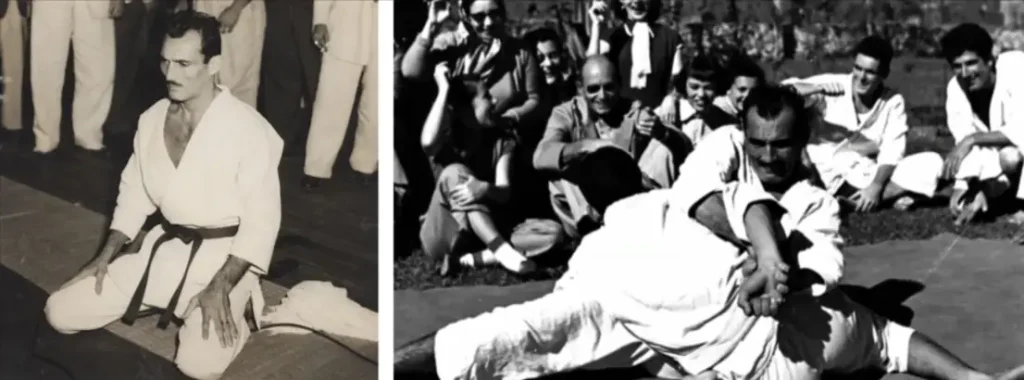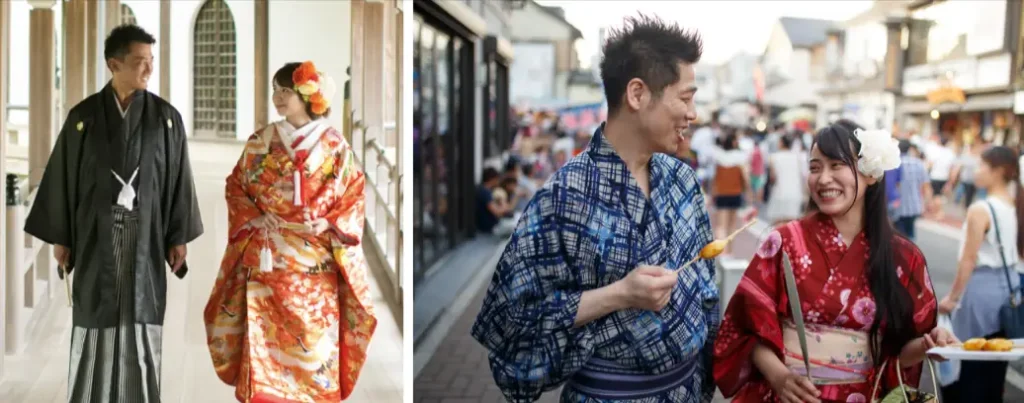Kimono vs Gi: Is It Gi or Kimono?
Kimono vs gi – two clothing items that often evoke curiosity and confusion. These garments have their roots deeply embedded in Japanese culture, but they serve different purposes and hold distinct meanings.
While many people interchangeably use the terms “gi” and “kimono,” it’s important to understand their individual significance and the contexts in which they are traditionally worn.
It is clear that the debate between “Is It Gi or Kimono?” in the world of martial arts is not a straightforward one. While some argue that the two terms can be used interchangeably, others believe that there are key differences between them.
However, after careful analysis of the history and evolution of both garments, it seems fair to conclude that despite their differences, they are more similar than different.
In this article, we’ll delve into the world of kimono and gi, unraveling their histories and understanding the specific occasions or activities they are associated with.
By the end, you’ll have a clearer understanding of these two traditional garments and appreciate the cultural diversity they represent.
So, let’s embark on this journey of discovery as we unravel the differences between the gi and kimono, and answer the question: Is it gi or kimono?
What is the Uniform Called in BJJ?
When it comes to Brazilian jiu jitsu, the uniform worn during training and competition is known as a gi.
The gi is an essential part of BJJ, and it consists of a jacket top, pants, and a belt. However, some people might be confused by the Japanese term “kimono” that also used to call the BJJ training uniform.
The origins of the BJJ gi can be traced back to its parent art, Judo. The founder of Judo, Jigoro Kano, created a uniform for his students that would be durable enough for grappling and submission techniques.
This uniform was called judo gi (judo keikogi) or simply “gi.” When the Gracie family started developing BJJ in Brazil in the early 20th century, they wore traditional judo gis while teaching. Over time, the design of the gi evolved specifically for BJJ practitioners but kept its original name – “gi”.

Why Is a Gi Called a Gi?
And what does gi stand for in jiu jitsu?
The term “gi” came from the Japanese word “keikogi,” which means “training clothes”, and is used to refer to the uniform or jacket frequently worn in martial arts such as jiu jitsu, judo, aikido, and karate.
Although some people use the terms “gi” and “kimono” interchangeably when referring to martial arts and jiu jitsu uniforms, they are not precisely the same.
A gi – in Japanese 着 – means dress or clothes. “Kimono” is another Japanese word that literally means “thing to wear”.

While a gi shares similarities with a traditional Japanese kimono in that it is composed of a loose-fitting top with long sleeves and pants that cover the legs, there are specific differences between the two.
Traditional Japanese kimono is not clothes for training purposes but is a national Japanese garment that is typically made from silk or cotton.

Martial arts gis are made of more durable materials than kimonos; they are created to withstand rigorous training sessions.
Additionally, gis have been designed for practicality in combat sports such as jiu-jitsu or judo where grabbing and holding onto your opponent is crucial.
Is a Kimono and Gi the Same Thing?
When it comes to grappling sports like jiu jitsu and judo, the terms gi and kimono are often used interchangeably.
At their core, both gi and kimono are simply Japanese terms for a type of clothing.
However, when we talk about these terms in the context of specifically BJJ, judo, aikido, or karate uniform, there are some differences. But as to the terms “kimono” and “gi” in the mentioned martial arts they are the same thing.
Is a Gi and Kimono the Same as BJJ Gi?
It’s not uncommon in the jiu-jitsu world to hear people refer to their gi uniforms as kimonos. However, this can be a bit confusing to those who aren’t familiar with the sport or Japanese culture.
So can a gi really be called a kimono? Well, technically speaking, a gi and a kimono are two different things.
As already mentioned, a kimono is a traditional Japanese garment that is usually made of silk or cotton and worn for special occasions or ceremonies.
On the other hand, a gi uniform is specifically designed for martial arts training and competition, such as BJJ or judo.
However, in the context of BJJ, it’s not unusual for people to refer to their gi uniform as a “BJJ kimono” or “BJJ gi kimono.” But some jiu jitsu practitioners prefer strictly to call the jiu jitsu uniform gi and not kimono.
So, can a gi be called a kimono? Yes, gi can be called kimono but keep in mind that some gyms may prefer one or the other term.
Why is the Gi Called a Kimono?
It could be argued that it’s just easier to say “kimono” than “gi uniform,” especially if you’re not sure what sport you’re referring to.
Additionally, there may be some cultural influence at play here.
The traditional Japanese martial art of judo has been around for over 100 years and has undoubtedly had an impact on BJJ culture.
As such, it’s possible that some practitioners feel more connected to the roots of their sport by using terms like “kimono” instead of “gi.”
One explanation for the name “kimono” used to refer to the gi is its similarity in appearance and general construction to the traditional Japanese robe. In fact, some gis are made in Japan and have been adapted from traditional kimono-making methods.
As BJJ spread around the world from its origins in Brazil and Asia, different cultural influences played a role in shaping how practitioners approached training attire.
In some countries where martial arts were already popular (such as Brazil), people may have started referring to the BJJ gi as a “kimono” because they were more familiar with Judo uniforms which used to be called kimono, dogi, or judogi.
Conclusion to Why is Gi Called Kimono
The gi uniform in Brazilian jiu jitsu has been called a kimono for years, which can make some people wonder why it is not simply called a gi.
The reason for this is quite simple.
When the art of Judo was introduced to Brazil in the early 20th century, practitioners would wear what they had available: their kimonos/judo gis.
When it comes to BJJ uniforms specifically, the term “gi” has become widely accepted and used. It is often used to refer to a uniform made specifically for BJJ with certain specifications such as reinforced stitching and thicker material.
While “kimono” may still be used by some practitioners to refer to their BJJ uniform, it is more commonly associated with traditional Japanese clothing worn for everyday life or special occasions.
Ultimately, whether you choose to refer to your uniform as a kimono or a gi comes down to personal preference.
What matters most is not what you call your uniform but rather how you wear it and use it in your training and competitions.